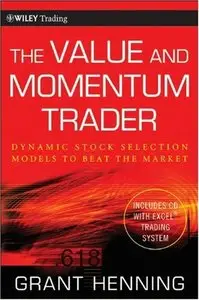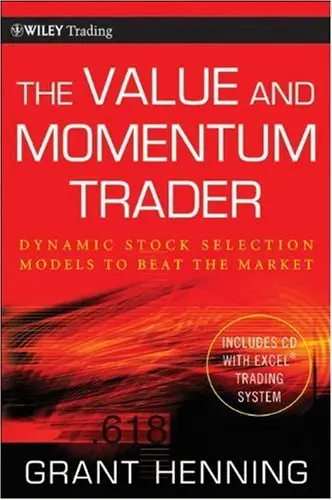Grant Henning, "The Value and Momentum Trader: Dynamic Stock Selection Models to Beat the Market"
Wiley | 2009 | ISBN: 0470481730 | 241 pages | PDF | 1,2 MB
Wiley | 2009 | ISBN: 0470481730 | 241 pages | PDF | 1,2 MB
A winning approach to stock trading based on proprietary statistical research in Excel
In The Value and Momentum Trader, Grant Henning presents a comprehensive approach to stock trading, which centers around Excel-based research methods he has developed. In this book, Henning presents the trading tools he has used to become a successful trader, and discusses some of the greatest challenges facing active market participants. This reliable resource presents both winning trading systems and all the skills necessary to perform as a trader as market conditions change. It also demonstrates how you can turn the successes and failures of any trading system into an interactive feedback loop to discover one's true trading skills.
Provides a solid understanding of the author's statistical trading system
Explores how to execute optimal trades under different market conditions
Outlines a very affordable Excel-based stock analysis method that is easy to implement
Dr. Henning has proven to be a trusted author with other academic publications in the areas of measurement and statistics.
The Value and Momentum Trader is an essential guide to trading today's dynamic markets.
Summary: Posttives of this book are many but there are puzzles too
Rating: 5
Congratulations are due Grant Henning for clearly explaining his stock selection system and even providing a CD in excel with the formulas in the book. It's not often that any successful trader will show their methodology, with explanations, so clearly. I liked the fact that the final universe of stocks was selected not only for technical but fundamental values too. However, I am puzzled by two tables in the book, 4.1 and 6.4. in table 4.1, three stocks are stated as buy or strong buy. Yet their subsequent three month performance beyond 12/31/2008 was poor. TWRT changed its symbol to BWEN; I could not find a chart for QSC; and DGLY was a better sell than a buy through 3/31/2008. In addition I was puzzled that so many of the other stocks in this table appear to be small cap to the point of being really obscure. (I looked at the three month time frame since the writer states that his usual holding period is a few days to three months.) Maybe he dumped these three stocks quickly? In table 6.4, I followed all stocks and found no significant correlation between buy or strong buy, sell or strong sell, and the subsequent three month performance from mid August 2008 to mid November 2008. The IKN symbol was not found; STAA and ALTH did as predicted but AFAM did not. PARL would have been a strong sell, not strong buy. I would be interested in seeing a better correlation between the extensive mechanics of the ranking system and the subsequent performance. At least looking at these two tables, there does not seem to be a good correlation of prediction to performance. I am interested in the two market timing indicators and would be interested to see if other researchers have confirmed the correlation between the VIX and the put call ratio, to the subsequent performance of the S&P 500.
Download
Not all books on AvaxHome appear on the homepage.
In order not to miss many of them follow ebooks section (see top of each page on AH)
and visit my blog too :)
In order not to miss many of them follow ebooks section (see top of each page on AH)
and visit my blog too :)
NO MIRRORS according to the rules



